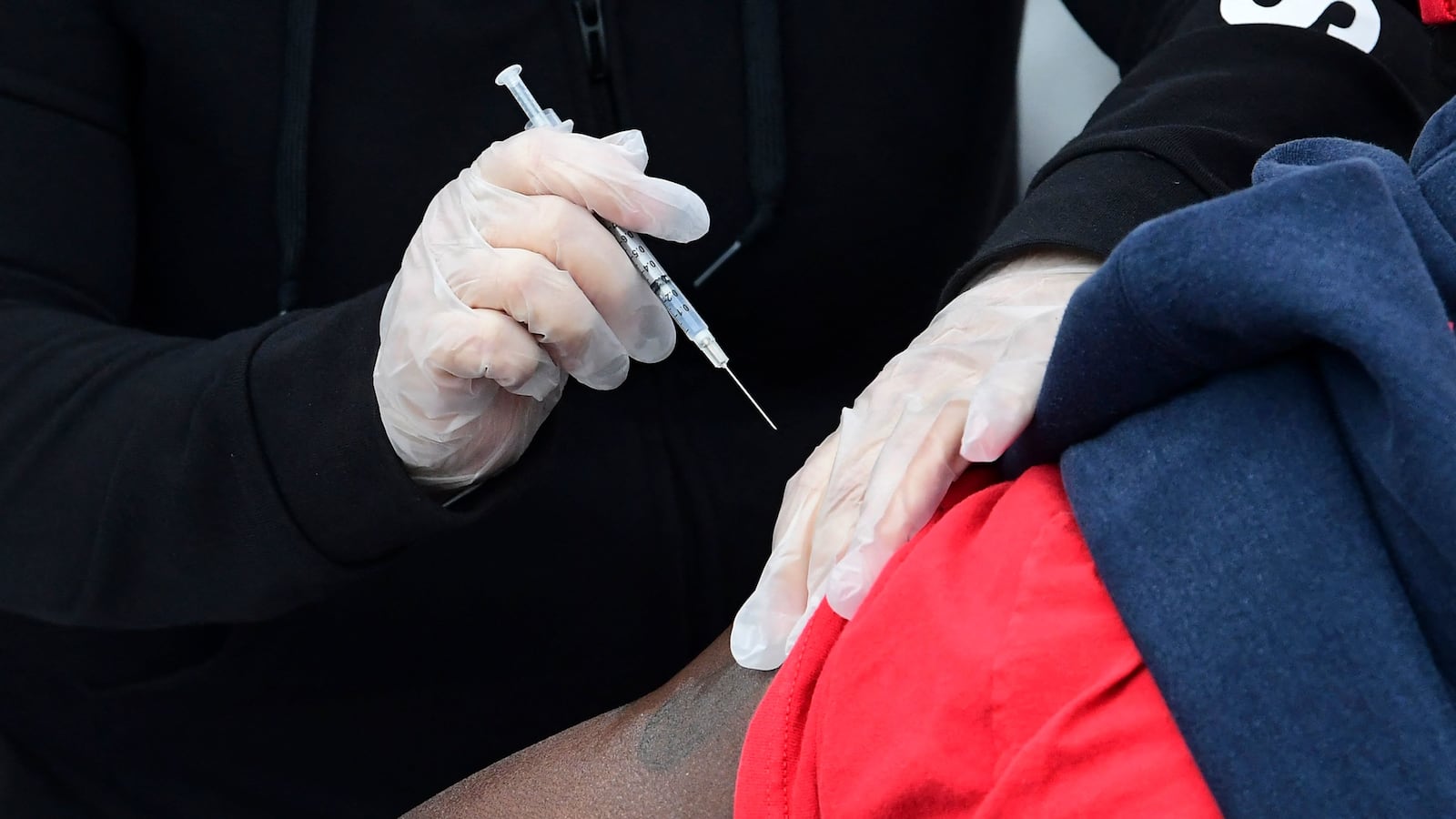President Joe Biden offered Americans across the country a glimmer of hope on Thursday night with a mandate for states to make COVID-19 vaccines available to everyone aged 18 and over by May 1. But experts say it’s far more likely lots of people are about to find their hopes dashed.
In California, state health officials are still tinkering with the list of medical conditions that people under 65 should have in order to qualify for a COVID-19 vaccine. In Florida, newly opened federal vaccination sites in minority neighborhoods are not boosting the state’s abysmal vaccination rate for Black and Hispanic residents. In Texas, the state saw its weekly vaccination distribution drop by more than 200,000. And in Washington, D.C., where Biden delivered his first presidential address from the White House, a pre-registration site for residents omitted one category of essential workers who are currently eligible to get shots.
From the East Coast to the West Coast, these are just some of the logistical nightmares that suggest the president’s mandate could fall way short of his expectations, according to infectious disease experts. It will be near impossible without the significant ramp up in the national vaccine supply that Biden has promised will materialize in the coming weeks.
Dr. Jeffrey Klausner, preventive medicine professor at the University of Southern California Keck School of Medicine, said the idea the U.S. will have enough vaccine supply in six weeks to make every adult in the country eligible is “aspirational.”
“The delivery systems are there, but there’s just not enough supply,” Klausner told The Daily Beast. “In Southern California, we’ve had to close sites because there are not enough vaccines. We run sites that send people home everyday because we run out of supply.”
States like Rhode Island, Vermont, and New Hampshire are more likely to meet the May 1 deadline because of their small populations, and they have demonstrated consistent success in meeting vaccination goals. “For larger states like Florida, Texas and California, that’s not realistic,” Klausner said. “Those states will continue to prioritize by age, risk and zip codes. We also have to make sure that we are first reaching essential workers and populations that disproportionately suffered during the pandemic.”
Jill Roberts, University of South Florida epidemiology professor, said Biden was imposing an “awfully optimistic deadline” because states’ vaccine distribution systems aren’t effectively reaching disadvantaged persons, who may not have computers to make online appointments, transportation to vaccination sites and the luxury to take time off to wait in lines.
“Our current system is not very efficient, we are seeing multiple reports of vaccines going unused at the end of the day and given to whoever stands around long enough to see if extra are available,” Roberts said. “There are too many pointless barriers [such as] state residency requirements, legal U.S. residency requirements and a requirement for government issued IDs.”
In Washington, D.C., for example, residents looking to land limited vaccine slots via a sluggish website likened the process to the movie The Hunger Games. On Wednesday, the District of Columbia rolled out a new online pre-registration system that still had a glitch: Commercial and residential property maintenance and environmental service employees who are eligible for vaccines were not listed in a drop-down menu on the site, despite being eligible for the vaccine in the current Phase 1c Tier 1.
During his Thursday speech, appearing to take a page from his predecessor Donald Trump’s braggart playbook, Biden boldly claimed that his administration was on track to hit milestones earlier than expected. “I said I intended to get 100 million shots in people’s arms in my first 100 days in office,” Biden said. ‘Tonight, I can say we’re not only going to meet that goal, we’re going to beat that goal. Because we’re actually on track to reach this goal of 100 million shots in arms on my 60th day in office. No other country in the world has done this, none.”
Biden said the White House has also been focused on serving people in the hardest hit communities of this pandemic—Black, Latino, Native American, and rural communities—by delivering vaccines to 10,000 pharmacies across America and setting up nearly 600 Federal Emergency Management Agency vaccination sites. “So what does all of this add up to?” Biden said. “When I took office 50 days ago, only 8 percent of those over the age of 65 had gotten their first vaccination. Today that number is 65 percent.”
He also asserted that every American who wants a vaccine will be able to get a shot by the end of May and announced the federal government would buy an additional 100 million doses of the Johnson & Johnson vaccines.
In some states, the reality on the ground doesn’t line up with Biden’s ebullient assessment of his administration’s vaccine rollout.
For instance, federal vaccination sites in Florida meant to help boost the number of minority and low-income people eligible for vaccines have been dogged by low turnout, forcing vaccinators to give shots to virtually any adult who wanted one, according to the Miami Herald. As a result, the sites have met their vaccination targets but are not reaching the people that are in more need.
Meanwhile, Johnson & Johnson is not helping the president’s cause. Earlier this week, the White House announced the government would be distributing 18.5 million doses, about 3 million less than the previous week, because no new doses of Johnson & Johnson’s vaccine were ready for delivery. According to Reuters, J&J’s manufacturing has been slower than expected, and the company was not expected to resume shipments until later this month.
“I deal with vaccine delivery every day,” Klausner said. “The supply is just not there. Will the supply be there in six weeks? I would certainly like to hope so.”






